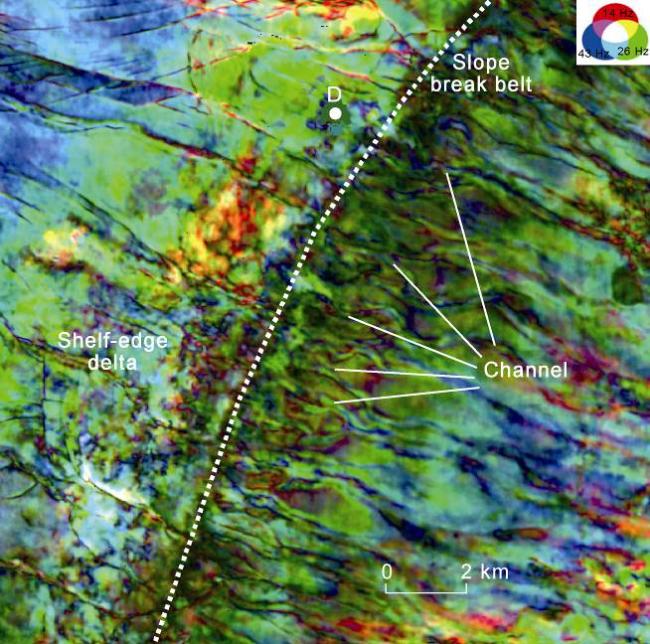In 1975, Galloway proposed a classification scheme for deltaic systems based on the relative strength of fluid processes such as river, wave, and tidal action, which are known as river-dominated, wave-dominated, and tide-dominated deltas
[22]. This classification scheme has been widely applied in the study of deltaic sedimentary systems. In recent years, with the deepening understanding of marine deltaic sedimentation, scholars have gradually realized that a single sedimentary dynamic mechanism cannot accurately characterize the complex sand body structures and spatial-temporal distribution in sedimentary records. Moreover, it is observed that a mixture of river, wave, and tidal dynamics is common in modern continental shelves, with stronger wave action
[23]. Therefore, the analysis of mixed processes of river, wave, and tidal action has gradually gained attention in the study of marine deltaic sediment characteristics
[24⇓-26]. Based on detailed core descriptions of the Zhuhai Formation in the Baiyun Sag, it is revealed that a mixture of river, wave, and tidal dynamics influences the shelf area of the Baiyun Sag. Different hydrodynamic conditions exhibit significant differences in core characteristics. Among these, river- dominated dynamics is the most common type, showing an overall upward-fining grain size rhythm, with developed cross-bedding, parallel bedding, and visible scouring-filling structures (
Fig. 6a). Sedimentary structure sizes decrease upwards, reflecting a transition from strong to weak hydrodynamic conditions. Wave action modifies and disrupts sand bodies supplied by previous river inputs, resulting in medium-thick sandy deposits with wedge-shaped cross-bedding and wave-formed cross-bedding, along with oriented mud pebbles (
Fig. 6b). Bioturbation and bioclasts are common, and sandstone sorting is relatively good, with sub-rounded to rounded grains. Tidal action is characterized by rhythmic bedding of sandstone and mudstone, muddy draping, and double clay layers. Thickness variations of sandstone and mudstone layers show obvious periodicity, reflecting changes in tidal sedimentation related to tidal magnitude (
Fig. 6c). In terms of planar distribution, river-dominated and wave-dominated processes dominate the inner shelf, while wave-dominated and tide-dominated processes dominate the outer shelf
[24]. Consequently, the shelf-edge deltas in the study area are susceptible to modification by wave and tidal processes.












